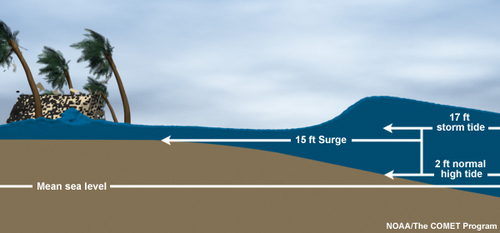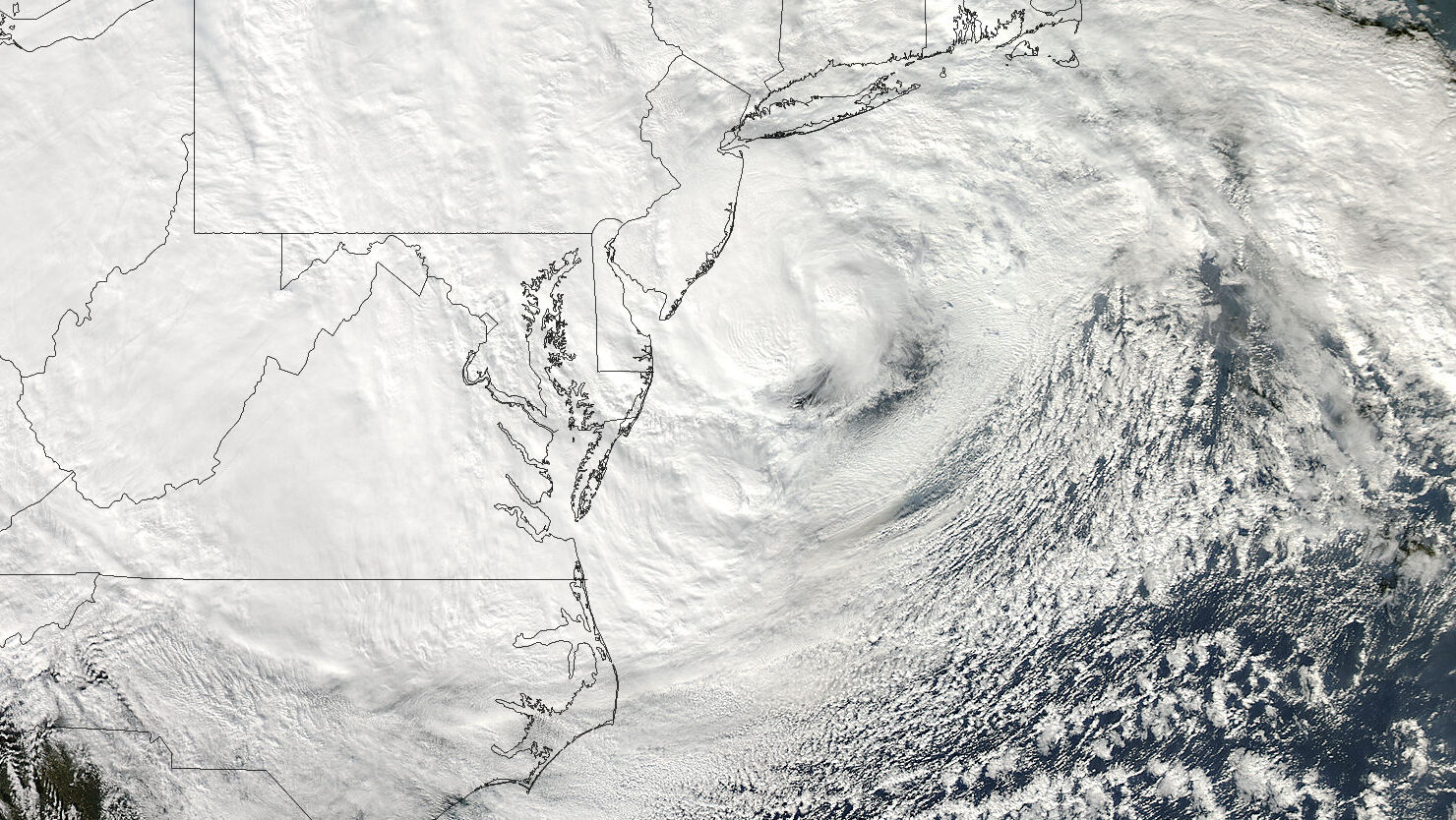
“It’s just a Category 2” I drawled to my anxious friend, as a hurricane that would prove to be the one of the most costly storms in the nation’s history advanced on us from across the Atlantic.
The hurricane proceeded to skirt the coast of Virginia as a Category 1 and quickly weakened, causing minimal damage. After it had passed, our beaches filled with people watching the unorganized blob of wind and rain that was once Hurricane Sandy continue its slow path northward toward New York.
However, it wasn’t long before the reports of the flooding, power outages, and intense human impact New Jersey and New York were facing made it back to us.
The news reports were calling it Superstorm Sandy, a term more indicative of the $50 billion in damages and over 100 deaths than its technical title: “post-tropical cyclone Sandy.”
The Saffir-Simpson Scale – A Tempestuous Topic
Sandy was at a lower hurricane category on the Saffir-Simpson scale when it made landfall in New Jersey on October 29, 2012 than it had been when it made landfall at any other point between the Caribbean and the northeast.
That fact, as well as the high damage from this low-ranked storm, sparked conversation as to whether the Saffir-Simpson scale, the major method of communicating hurricane strength, is appropriate for public communication and emergency planning.

This scale describes the maximum sustained winds in a storm. Its five divisions describe different ranges of wind speeds, and are delineated by the type of damage buildings typically experience under those winds.
The impacts range from some damage to shingles and siding at a Category 1, to total roof failure and severe damage to the frame at a Category 5. A hurricane of Category 3 or higher is considered a “major hurricane”.
Saffir-Simpson Clouds Public Perception
Regardless of category ranking, any hurricane is a very dangerous event. This fact that may be lost in communication to the public. Most reporters try to convey risks, but describing the danger of a given category quickly and in an understandable way during a newscast is difficult.
The scale is often reported as a category and wind speed, with the details of the damage left implied. As a result, many people, myself included, perceive Category 1 and 2 hurricanes as “weak” or insignificant, and may fail to undertake the complicated task of evacuation.
Flood Risks Evade Public Radar under Saffir-Simpson
The impact on perception of storm risk is worsened by the fact that the Saffir-Simpson scale only addresses wind, not flooding and storm surge, which are the most significant causes of damage and loss of life in a hurricane.
The disconnect between Saffir-Simpson category and total impact has been a problem outside of cyclone Sandy:
- Hurricane Florence (2018) was a Category 1 that caused over $24 billion and 53 deaths, damage not often met even by Category 4 or 5 storms
- Hurricane Isaac (2012) landed as a weak Category 1 and caused over 10 feet of total flooding in some places, similar to the flooding from Hurricane Katrina (2005)
- Hurricane Katrina (2005), Category 3, had a storm surge 4 times that of Category 5 Camille (1969). As a result, Katrina caused greater damage and death than Camille, even in comparable regions and populations
Because wind speed is not a good indicator of storm surge, expectations about storm surge cannot be easily incorporated into the Saffir-Simpson scale. The National Hurricane Center tested a version of the Saffir-Simpson scale that did include storm surge estimates. The actual surge was generally underestimated, and the scale caused more risk to the public with the storm surge addition than without it.
A Storm Surge Scale Fails to Make Landfall
Given the role that storm surge plays in damage, some hurricane experts have suggested that a separate storm surge scale be developed to communicate surge risks to the public.

One approach, the Kuykendall scale, would list storm surge heights alongside expected monetary loss. This approach would include damage data, income, and flood insurance data.
The National Weather Service advocates instead for a focus on inundation, which combines flooding and storm surge, and communicating risk on a community scale rather than assigning a type of risk to a whole storm.
For the same reasons that the storm surge metrics were removed from the Saffir-Simpson scale, the National Hurricane Center has not supported a separate storm surge scale. A storm of a given size and wind speed can cause vastly different storm surges depending on local geography, such as the slope of the land. It would be difficult to convey unique expected storm surges to all communities at risk. Storm surge is also impacted by previous wind speeds and tide level at landfall, and can only be predicted well shortly before landfall.
An Eye to the Future
Climate change is expected to change the way hurricanes occur, though there is disagreement about whether those changes will be spatial, in frequency, or in strength. What is clear is that, while reporting hurricane risk is less than straightforward, improving perception of that risk will likely become an increasing part of protecting communities from the impacts of hurricanes.
As it currently stands, the information presented by the Saffir-Simpson scale is unintentionally misleading. With more information, individuals would be able to make choices about their safety that are likely to have a better outcome.
It would be beneficial for the National Hurricane Center to create resources for reporters and other risk communicators to convey different types of hurricane risk, and the Center should continue to encourage efforts to quantify storm surge risks. Communities could then be presented with a range of potential risks described in tangible terms, such as type of damage faced. Potential scenarios such as landfall at high tide and high storm surge should be described. Information such as total flooding from rainfall, storm surge, and wind damage should be presented in the same news reports.
The introduction of new information should also come with an emphasis on types of risk outside of wind damage, in line with their relative degrees of impact. By not putting a scale value of 1 or 2 at the center of a storm’s profile, the extent of the risk may be easier to absorb.
There is room for both conveying scientific certainty and comprehensive risk communication, and to not explore the options for combining these areas is to continue putting people at risk.
